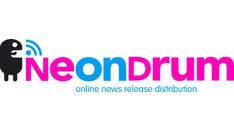Ubidyne features latest active antenna system for small and macro cells at CommicAsia 2012
 With the impending transition from analogue to digital terrestrial television (DTT) across the Asia-Pacific region freeing new spectrum for wireless broadband, active antenna technology will play a key part in building the business case for rolling out LTE services to rural areas, claims Michael Fränkle, CEO of Ubidyne, a leading developer of dynamic digital active antenna technology for wireless communications.
With the impending transition from analogue to digital terrestrial television (DTT) across the Asia-Pacific region freeing new spectrum for wireless broadband, active antenna technology will play a key part in building the business case for rolling out LTE services to rural areas, claims Michael Fränkle, CEO of Ubidyne, a leading developer of dynamic digital active antenna technology for wireless communications.
“As the world’s largest mobile market already contributing nearly 3{e1f18614b95d3cd6e4b3128e1cd15d99b042a60a5a19c19b7a8e07e7495efa10} of aggregate GDP, many Asia Pac countries will offer operators new digital dividend licenses in conjunction with an obligation to extend the rural coverage of mobile broadband,” says Fränkle. “This presents a challenge to OEMs and operators who need to reduce the cost of deployment, operation and maintenance to make a strong business case. While this is difficult using traditional passive antennas, new active antenna technology can be a ‘game changer’ by significantly reducing both CAPEX for network roll-out and OPEX for network operation costs.”
Most Asia-Pac regions will soon move towards allocating the digital dividend spectrum using the 700MHz band also being adopted in the US, rather than the higher 800MHz band available in Europe for new LTE rural services. These lower bands have better propagation characteristics for rolling out larger cells in less populated areas.
By removing the need for bulky coaxial feeder cables, remote electrical tilt assemblies and additional amplifiers on towers and masts, Ubidyne’s patented active antenna technology significantly reduces installation costs and energy consumption while improving radio performance, deployment and optimization, flexibility, coverage and network capacity. OPEX costs and outages are further reduced by Ubidyne’s Self-Healing mechanism that secures antenna coverage in the unlikely event of a system failure.
In US trials with a major Tier 1 operator using the 700MHz band similar to the band proposed in Asia-Pac, Ubidyne’s Antenna Embedded Radio technology delivered double throughput at the cell edge together with reduced output power of the terminal and an increase of over 40{e1f18614b95d3cd6e4b3128e1cd15d99b042a60a5a19c19b7a8e07e7495efa10} cell capacity with the same output power. This successful independent verification demonstrated how operators can use active antenna technology to deliver real CAPEX and OPEX costs.
“The digital dividend is presenting an exciting new opportunity to meet the growing demand for high-quality broadband data services across Asia-Pac,” said Michael Fränkle. “Based on our trial experience in 700MHz LTE in the US, we see a concrete opportunity and believe active antenna technology will help OEMs and operators to make a strong business case for rural broadband and accelerate the successful roll out of new optimised LTE 700.”
In addition to the uB700 that supports LTE in the 700MHz digital dividend band, the uB900 supports GSM, UMTS and LTE in the 900MHz frequency band. Ubidyne is also developing an 800MHz solution and in the near future will support high-band up to 2.6GHz as well as multi-band requirements.











